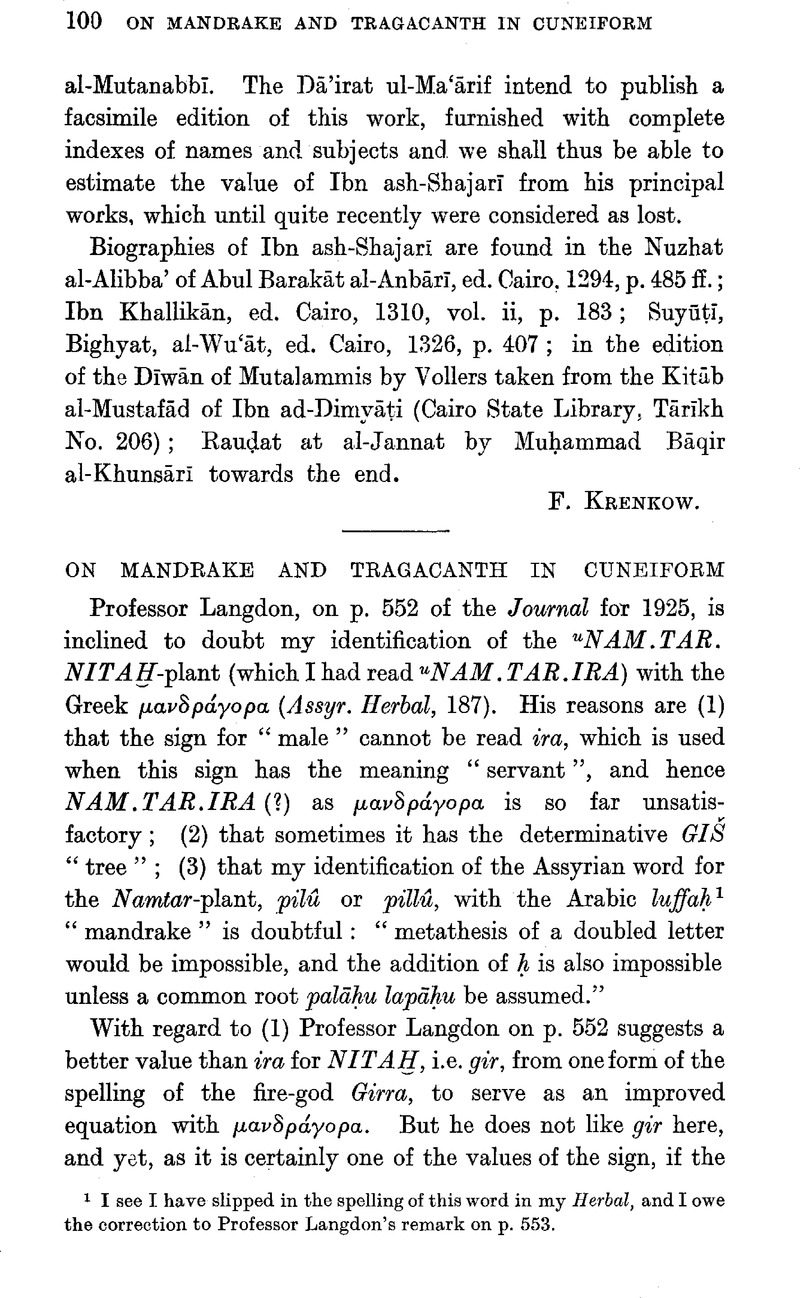No CrossRef data available.
Article contents
On Mandrake and Tragacanth in Cuneiform
Published online by Cambridge University Press: 15 March 2011
Abstract

- Type
- Miscellaneous Communications
- Information
- Copyright
- Copyright © The Royal Asiatic Society 1926
References
page 100 note 1 I see I have slipped in the spelling of this word in my Herbal, and I owe the correction to Professor Langdon's remark on p. 553.
page 101 note 1 Cf. also ḫalluru = אלרות
page 101 note 2 Cf. Theophrastus, “they cut little balls of it” ; and Dioscorides, “it bears apples like sorb-apples,” quoted in an article on the mandrake by Dawson, W. R., The American Druggist, 1925Google Scholar.
page 101 note 3 Cf. SAI 3313, comparing Boissier, DA, 171, 19, and also ÚR = rihḫû (SAI 3315). In the medical text KAR. 157, r. 30, ÚR.MEŠ and bur-ka (penis) are in the same line describing the symptoms. Note also Holma, Körp., 63.
page 102 note 1 Unless this is paḫallu, Holma, ib., 100.
page 103 note 1 Supalu I take to be manna. It is included in the same register as lasirbitu “laserpitium”, asafœtida, another gum in the Plant Text published by Sidney Smith (AH. 268).
page 103 note 2 In the chemical texts (see my On the Chemistry of the Ancient Assyrians, 68, 77) kalgugu and 1 shekel of IN.N[U.UŠ] are to be mixed. IN.NU.UŠ is uncertain (note that it has no determinative); but its quantity is very small. If kalgugu is “rouge”, as I have suggested as possible, some adhesive is necessary to make it stick, and tragacanth would serve like our gum arabic. But here all our premises are uncertain.




